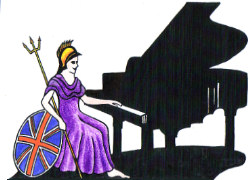Teachers, Accompanists and Piano Entertainers in the UK

UK Piano Page

Tower Hamlets, London E14
England
Tower Hamlets piano moving and piano disposal
Kingston upon Thames, London KT1
England
London Borough of Kingston Piano Moving , Piano
126 Meadfield Rd
Langley
Langley, Berkshire SL3 7JF
England
Used and new acoustic and digital piano
38 Joel Street
Northwood Hills
Northwood, London HA6 1PA
England
We are importers and distributors of new and
11, St. Mary's Hill
Stamford, Lincolnshire PE9 2DP
England
Music shop established in 1963 we stock a large
Music Festival for performers and guests Our 10th
18-06-2022 12:30PM
The Morecambe Bay Piano Group was set up to extend
11-12-2021 01:00PM
The Morecambe Bay Piano Group was set up to extend
08-01-2022 01:00PM
The Morecambe Bay Piano Group was set up to extend
12-02-2022 01:00PM